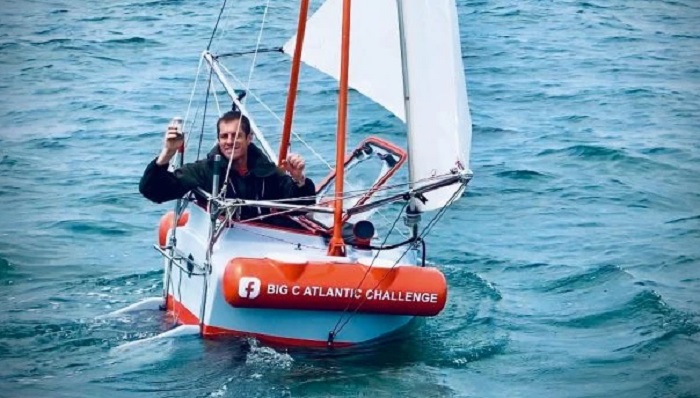There’s nothing quite like the feeling of drifting into a quiet cove, dropping anchor, and relaxing as your boat gently rocks with the tide. But that peace of mind only comes when you trust your anchor to hold you steady. Whether you’re exploring new coastlines, fishing in deep waters, or just enjoying a lazy afternoon on the bay, choosing the right Boat Anchors is one of the most important decisions every boater makes.
High-quality anchors are essential for safety, comfort, and convenience — and modern Boat Anchors come in many types to suit different vessels, sea beds, and weather conditions. Understanding how they work and how to choose the best one will make your time on the water smoother and safer.
1. Why Boat Anchors Matter
Anchors are more than just heavy metal tools; they’re your connection to the sea floor and your guarantee of stability. The right anchor ensures that your boat stays put even when tides shift or winds rise. Without it, you risk drifting into dangerous waters, damaging nearby vessels, or running aground.
For leisure trips, good Boat Anchors mean peace of mind. You can confidently stop for a swim, picnic, or nap knowing that your vessel won’t drift away. On longer voyages, anchors also protect you overnight, securing your position as you rest or wait for better weather.
2. Understanding How Anchors Work
Every anchor operates on a simple principle: resistance. When it’s dropped, the anchor digs into the sea bed and uses its shape and weight to create holding power. The more surface area it grips, the stronger the hold.
Different types of Boat Anchors are designed to perform best in specific conditions. Sandy bottoms, rocky seabeds, and muddy harbors each require a unique design for optimal grip. Choosing an anchor that matches your typical sailing environment ensures reliability and ease of retrieval.
3. Popular Types of Boat Anchors
There isn’t one “perfect” anchor for all boats — it depends on size, type, and usage. Here are a few of the most common anchors used by recreational boaters:
Fluke (Danforth) Anchor: Lightweight and excellent for sandy or muddy bottoms, it offers high holding power for its size.
Plow (CQR or Delta) Anchor: Designed to reset itself easily, ideal for changing wind directions. Works well in sand, mud, and clay.
Claw (Bruce) Anchor: Great for rocky and weedy areas; known for quick setting and reliability.
Mushroom Anchor: Commonly used for small boats or permanent moorings where long-term holding is needed.
Grapnel Anchor: Compact and foldable, perfect for dinghies or temporary stops in shallow waters.
Each of these Boat Anchors has strengths and weaknesses — the key is to match your anchor type to where and how you sail.
4. Factors to Consider Before Buying
When choosing an anchor, think about:
- Boat Size and Weight: Heavier boats require larger anchors with more holding power.
- Sea Bed Type: Sand, mud, rock, and grass all interact differently with anchor designs.
- Weather Conditions: If you often sail in windy or tidal areas, prioritize an anchor with strong reset capability.
- Ease of Storage: Folding or compact Boat Anchors are handy for small boats with limited storage.
- Material: Galvanized steel offers durability and corrosion resistance, while stainless steel combines strength with a polished finish.
5. The Role of Chain and Rope
An anchor’s effectiveness doesn’t depend on the anchor alone — the chain and rope setup, known as the “rode,” is just as important. The chain adds weight that helps the anchor lie flat, improving its grip.
A good rule of thumb is to use a chain at least equal to your boat’s length for small vessels. For larger boats, combining chain with rope provides flexibility and shock absorption. Properly pairing your Boat Anchors with the right rode ensures consistent performance and easier retrieval.
6. Setting and Retrieving Your Anchor
Anchoring may seem simple, but technique matters. To set an anchor:
- Approach your chosen spot slowly, facing into the wind or current.
- Lower (don’t throw) the anchor until it touches the bottom.
- Reverse gently while letting out the rode until the anchor digs in.
- Once it holds, secure the line and note landmarks to ensure you’re not drifting.
When it’s time to leave, motor slowly toward the anchor’s position and pull vertically to free it. Well-designed Boat Anchors should release easily once the tension changes.
7. Maintaining Your Anchor
Even the toughest anchor needs occasional care. After each trip, rinse it with fresh water to remove salt, sand, and debris. Inspect for rust, bends, or cracks, especially around welds and flukes.
If you notice damage, repair or replace the affected parts immediately. A compromised anchor can fail when you need it most. Storing Boat Anchors in a dry, well-ventilated area extends their lifespan and prevents corrosion.
8. When to Carry More Than One Anchor
Experienced sailors often keep more than one anchor onboard. A secondary anchor — sometimes called a “kedge” anchor — is useful for emergencies, anchoring in narrow channels, or stabilizing the boat in strong currents.
Using two Boat Anchors set in different directions also helps prevent swinging when the wind shifts. It’s an added layer of safety and control that serious cruisers swear by.
9. The Future of Anchoring Technology
Modern boating has seen innovations even in traditional tools like anchors. Some advanced designs use pivoting flukes or hydrodynamic shapes for superior holding power. Lightweight composite materials make anchors easier to handle without sacrificing strength.
Smart sensors and digital anchor alarms can alert you if your boat drifts too far — a perfect combination of tradition and technology that makes anchoring safer than ever.
Final Thoughts
Anchoring is one of the most fundamental skills in boating, yet it’s often overlooked. A dependable anchor gives you the freedom to explore, relax, and enjoy every destination without worry.
By investing in durable, reliable Boat Anchors, you’re not just buying a piece of metal — you’re buying security, stability, and the confidence to chase adventure wherever the water takes you.








Leave a Reply
View Comments